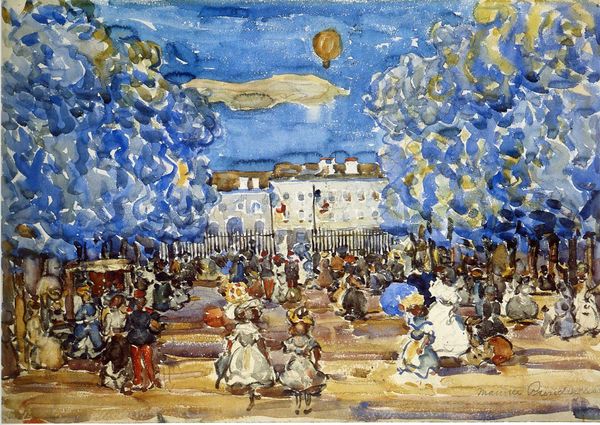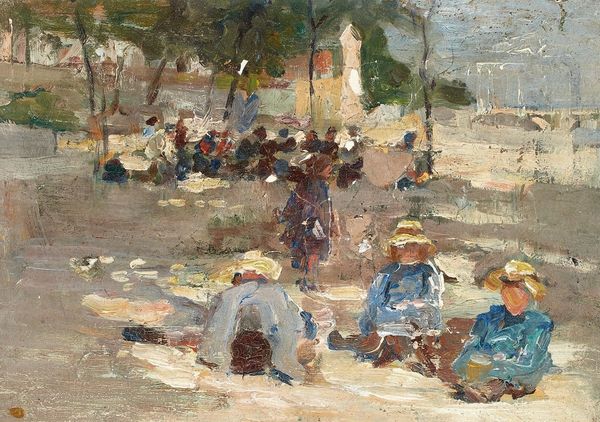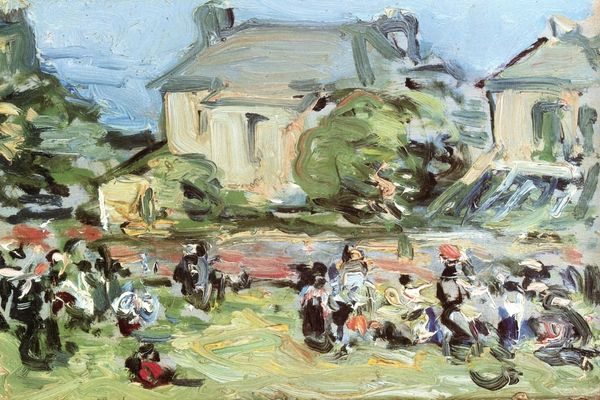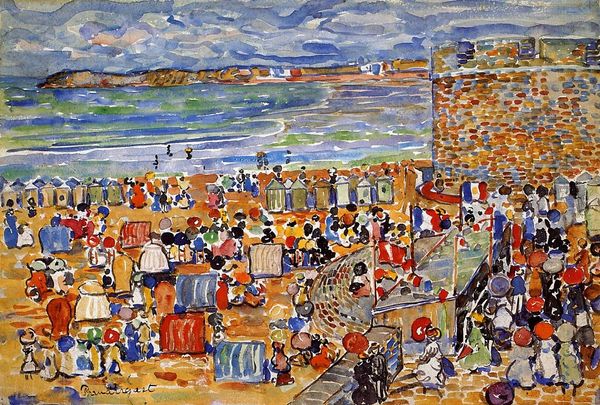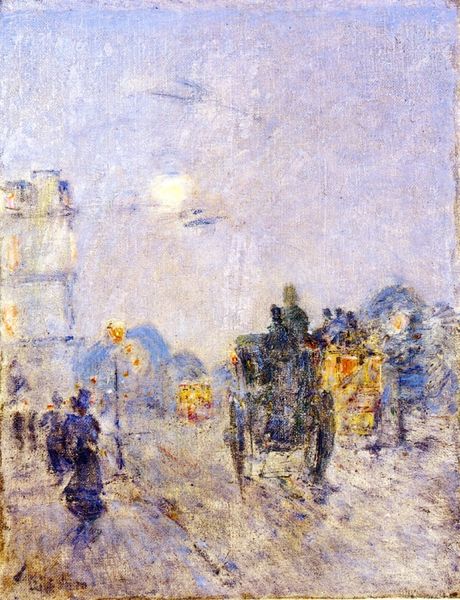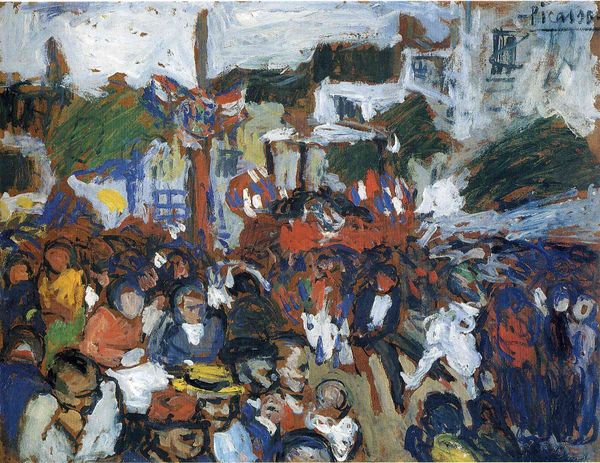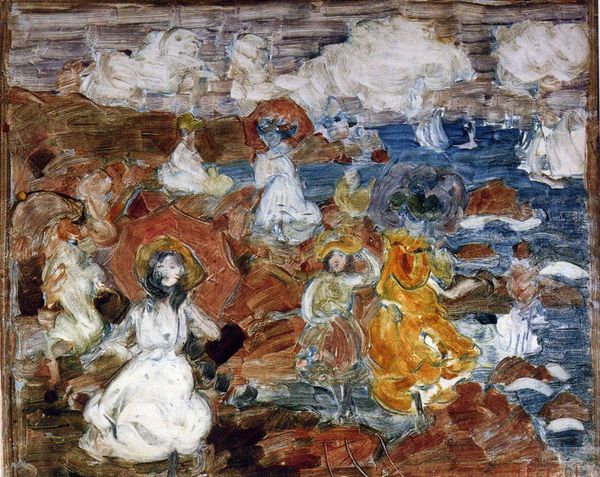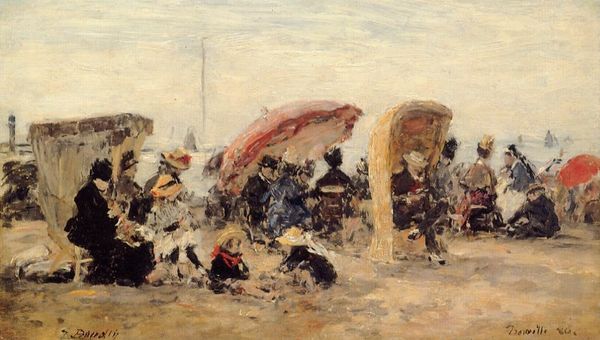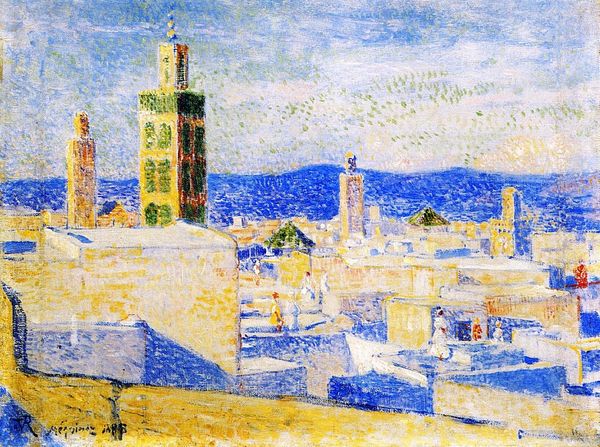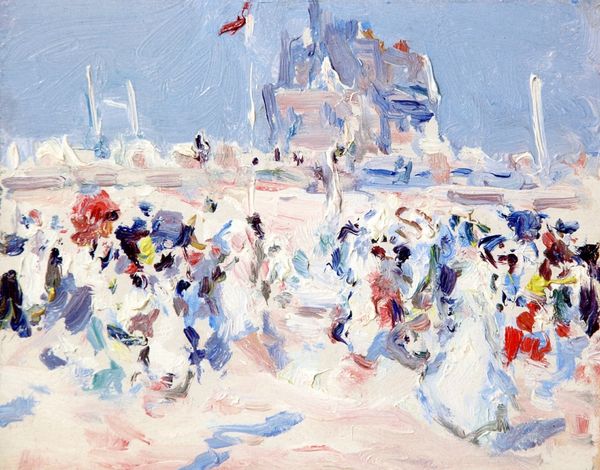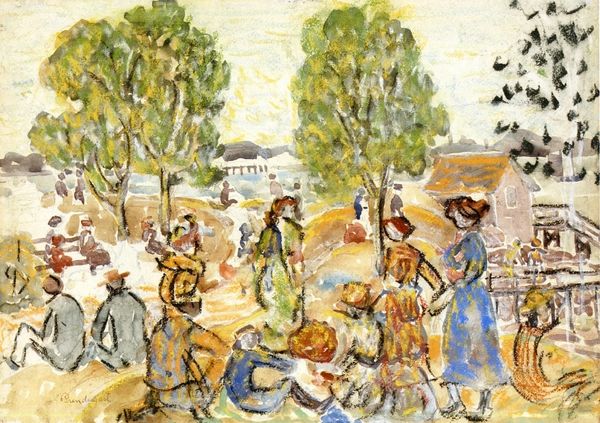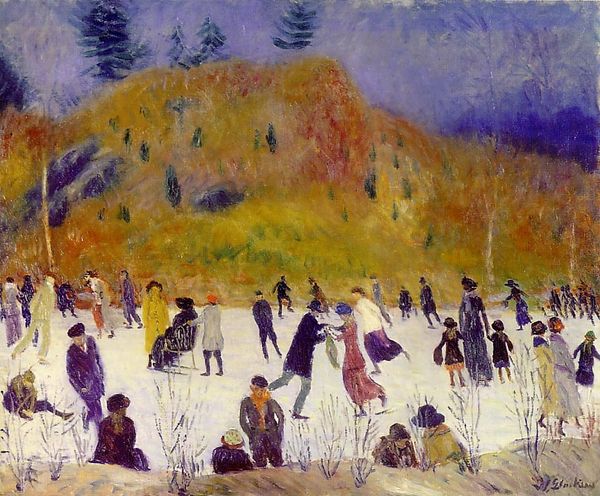
painting, plein-air, oil-paint, architecture
#
painting
#
impressionism
#
plein-air
#
oil-paint
#
landscape
#
impressionist landscape
#
possibly oil pastel
#
oil painting
#
orientalism
#
cityscape
#
architecture
Dimensions: 31 x 40.5 cm
Copyright: Public domain
Editor: Theo van Rysselberghe's "Encampment near a Moroccan Village," painted in 1888, is quite striking! The impressionistic brushstrokes create a shimmering, almost dreamlike atmosphere. I’m curious – how does this work fit into the artistic and cultural context of its time? Curator: That's a great starting point. Van Rysselberghe painted this during a period of intense European interest in North Africa, a phenomenon we now understand as Orientalism. How do you see that playing out here? Editor: Well, the title itself points to a Western gaze observing an "encampment" rather than, say, depicting everyday life. And the loose brushwork... it almost exoticizes the scene, softening the edges of reality. Curator: Precisely. And consider where this painting would have likely been displayed: in a European gallery, catering to an audience hungry for romanticized views of the "Orient." The artist uses plein-air techniques which were new, yet the subject is loaded with historical implications. What do you think is the impact? Editor: I imagine it reinforced existing stereotypes while presenting itself as objective observation. The light and colour are beautiful, but the power dynamic is inescapable. Was Van Rysselberghe aware of this, do you think? Curator: That’s the critical question, isn’t it? Artists don’t exist in a vacuum. The art market, colonial policies, and popular imagination all shaped what he chose to paint and how. Studying the reception of works like these at the time tells us so much about the cultural dialogue. Editor: This has shifted my perspective significantly! I was initially drawn to the visual beauty, but now I see how intertwined the work is with the power structures of its time. Curator: Exactly! That's why examining art through a historical lens can reveal the complex ways in which art both reflects and shapes society.
Comments
No comments
Be the first to comment and join the conversation on the ultimate creative platform.

